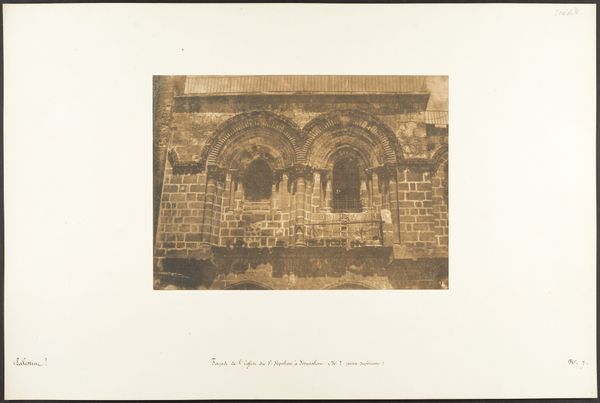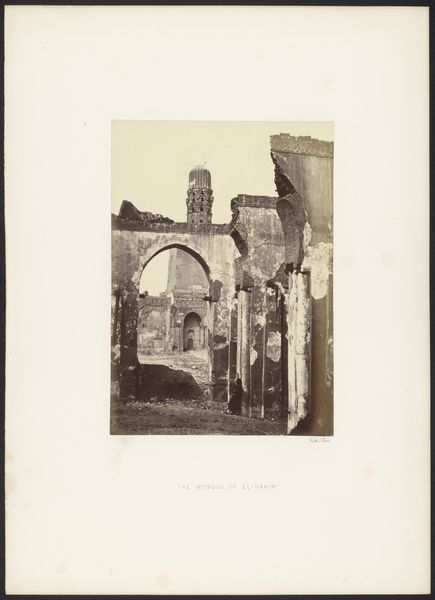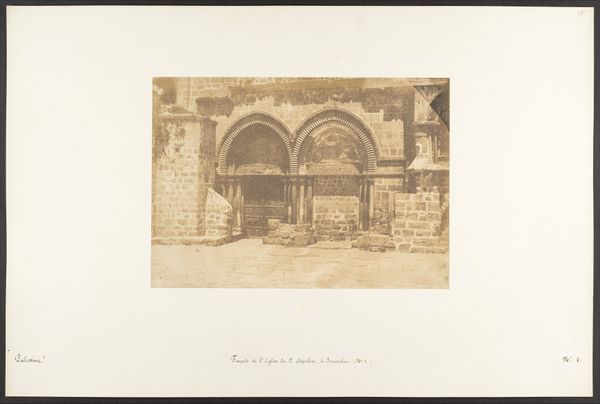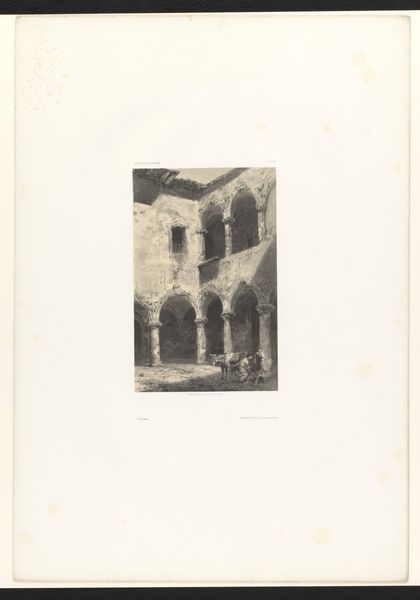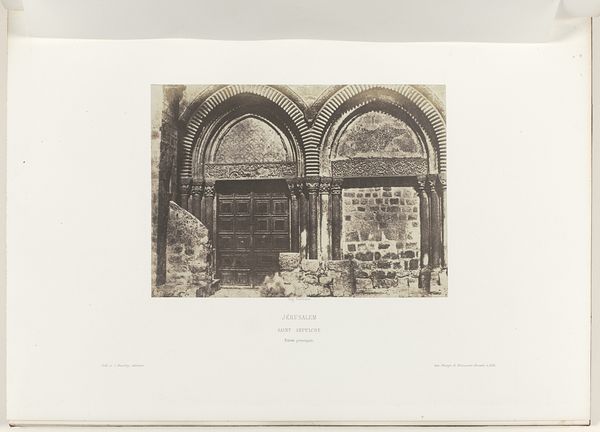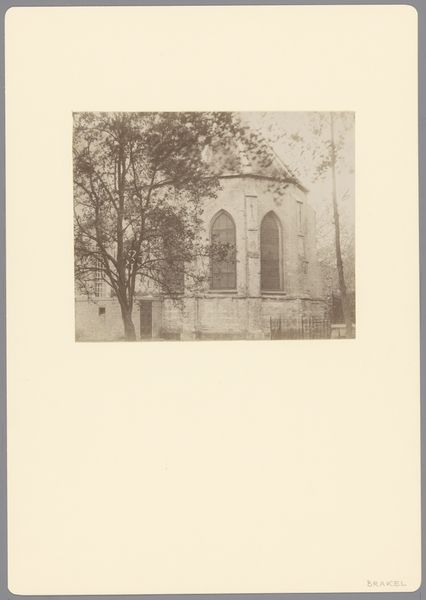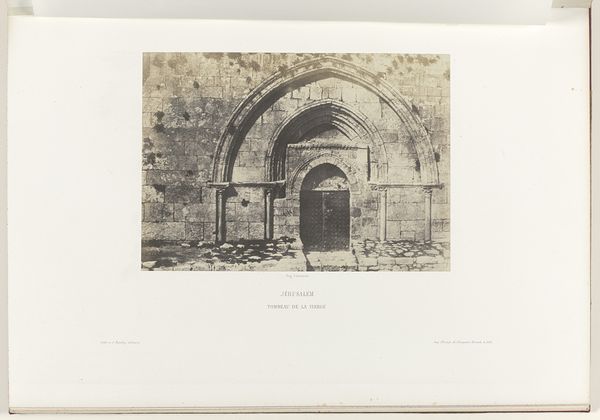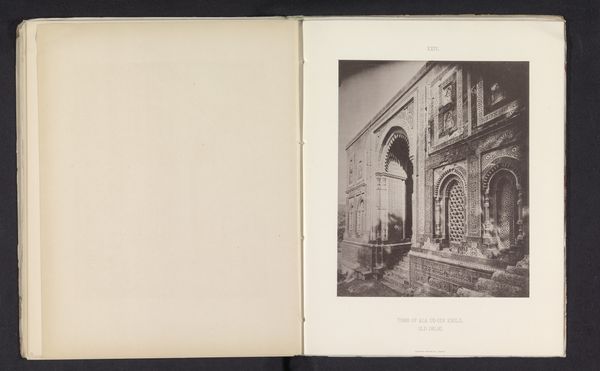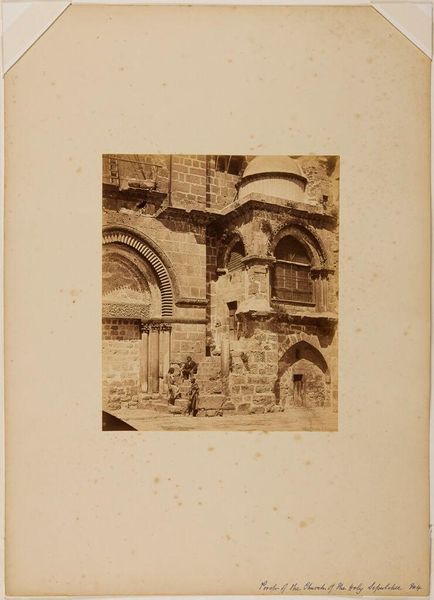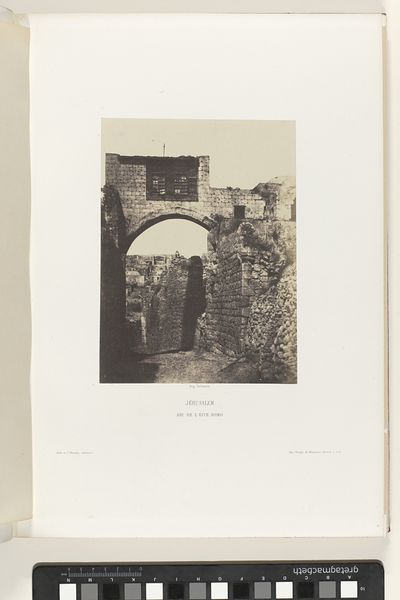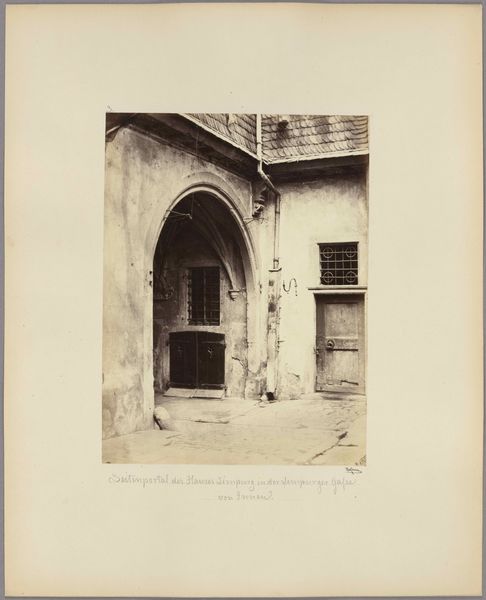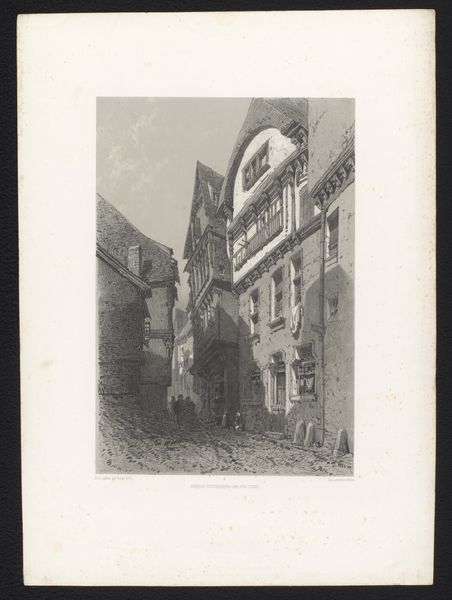
print, photography, albumen-print
# print
#
landscape
#
photography
#
ancient-mediterranean
#
albumen-print
#
realism
Dimensions: height 217 mm, width 151 mm
Copyright: Rijks Museum: Open Domain
Editor: This albumen print, “Voorgevel van de Heilig Grafkerk, Jeruzalem,” or Facade of the Church of the Holy Sepulchre, Jerusalem, by Auguste Salzmann, was made between 1854 and 1856. It has a rather somber feel. It reminds me of historical documentation but with artistic undertones. What's your interpretation of it? Curator: Salzmann’s photograph highlights an interesting point in the history of photography and its relationship to political power. Think about the 1850s: Europe’s fascination with the Holy Land was growing, intertwined with colonial ambitions. Salzmann, commissioned for a seemingly objective project—proving Biblical truth through photographs—was nonetheless deeply implicated in these politics. How do you think this context affects our reading of the image today? Editor: It’s unsettling to consider that this image, presented as fact, could be part of a larger political narrative. Does the architecture itself play a role? Curator: Absolutely. The stark facade, devoid of embellishment, feels austere. Is it emphasizing the unadorned “truth” of the location, while inadvertently participating in its visual appropriation? Furthermore, photography in this era allowed for wider dissemination of images and further shaped public perception. Editor: So, beyond being a depiction, it's a carefully crafted presentation serving multiple agendas? Curator: Exactly. It’s about considering the public role of images, the authority they convey, and who benefits from that authority. Even the scientific pretense of photography doesn’t negate its political impact. Editor: I never really thought about it that way. The photograph felt like just an honest visual, but knowing the historical context makes me realize there’s much more to it. Curator: Seeing art in context certainly deepens its meaning and allows us to question assumptions about its creation and reception. It’s been a valuable insight.
Comments
No comments
Be the first to comment and join the conversation on the ultimate creative platform.
